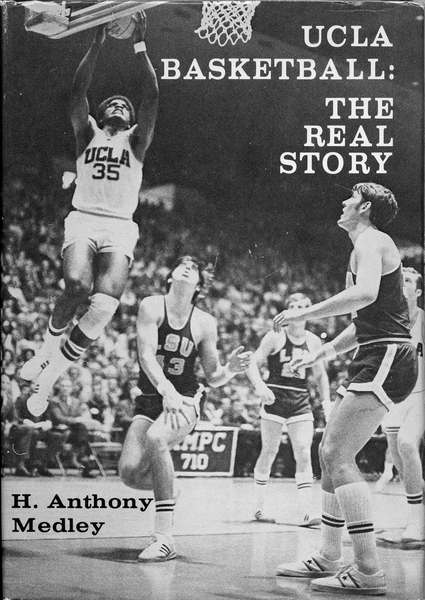|
Out of print for more than 30 years, now available for the first time as an eBook, this is the controversial story of John Wooden's first 25 years and first 8 NCAA Championships as UCLA Head Basketball Coach. Notre Dame Coach Digger Phelps said, "I used this book as an inspiration for the biggest win of my career when we ended UCLA's all-time 88-game winning streak in 1974." Compiled with more than 40 hours of interviews with Coach Wooden, learn about the man behind the coach. Click the Book to read the players telling their stories in their own words. This is the book that UCLA Athletic Director J.D. Morgan tried to ban. Click the book to read the first chapter and for ordering information. |
|
Pitching and Dumb Managers by Tony Medley My disdain for baseballís knowledge of the science of pitching is well known. But Dodgersí manager Joe Torre is bringing ignorance to a new low (or is it high?). Torre is the type of guy who will pull a starting pitcher who is throwing a 2-hitter with 7 strikeouts and 2 walks just because heís thrown 100 pitches, or because the shortstop makes an error. But heís showing in these playoffs that he has no clue about what a pitcher is supposed to do. He has two relievers, one a lefthander, George Sherrill, and the other a rotund guy named Broxton. Neither can get his first pitch over the plate. Sherrill constantly pitches from behind in the count. Joe apparently doesnít appreciate that itís not a good idea to pitch from behind in the count. He shows this because he has his batters take 2-0 pitches. A 2-0 pitch is a batterís dream because the pitcher has to come in with a good pitch, usually a fastball. But the Dodgers consistently take 2-0 fastballs right down the middle. But thatís not the point of this essay. If you have a relief pitcher who canít get the ball over the plate, you should pull him a lot faster than pulling a starter who is throwing a 2-hitter, but has thrown his 100th pitch. Last night was a perfect example. The Dodgers were leading by a run going into the bottom of the ninth. The rotund Broxton (300 lbs) was on the mound. The first batter hit a shot, a hard grounder to shortstop for an out. To me, this was troubling because he hit the ball very hard. But to Joe, it was an out. Joe canít distinguish between a line shot to the third baseman and a Texas League single. Heíll pull a pitcher who fools the batter but allows a poorly hit blooper for a hit (for that matter, he will pull a pitcher because the shortstop makes an error), but wonít budge when the batter tees off but hits a liner right at someone. But that is apparently a distinction that only I can see. Anyway, the first batter hits the ball hard but itís an out, so Joe is serene. Broxton walks the next batter on four straight balls. He never came close. Itís one thing to be nibbling at the plate and just miss. Itís another to never get close. Like Sherrill, Broxton never got close. I would pull him right there. Your gold plated reliever should never walk a weak hitter, and on four pitches? Heís outa there if Iím the manager. But Joe doesnít budge. Broxton hits the next guy with his first pitch. Two men on because the pitcher canít get the ball over the plate! This guy is your best reliever? Clearly he doesnít have it. Nobody in his right mind should leave this guy in the game. But Joe doesnít budge. He hasnít thrown 100 pitches yet. It was no surprise to me when Jimmy Rollins, a .250 hitter, lined his two-out double to right center scoring the tying and winning runs off one of the fattest fastballs youíll ever see. Broxton shouldnít have been in the game. When a pitcher doesnít have his control, heís a distinct liability. Broxton grooved a fastball that I could have hit. That loss is Joe Torreís fault.
|
